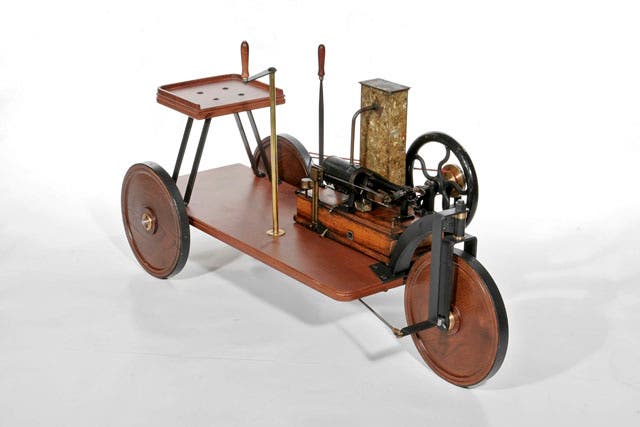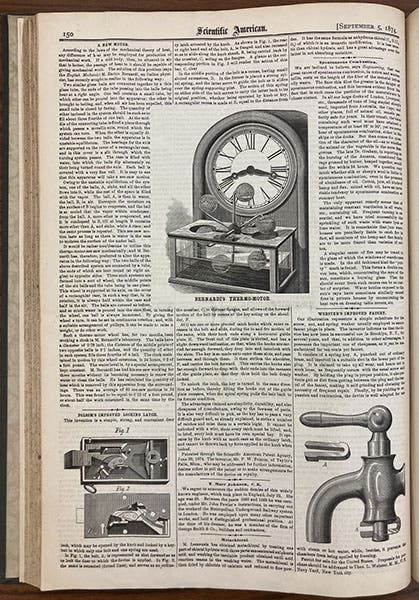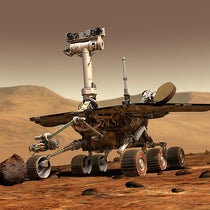Scientist of the Day - Enrico Bernardi
Enrico Zeno Bernardi, an Italian engineer, was born May 20, 1841, in Verona. Bernardi was an inventor as well as a professor of engineering at various Italian universities, including Vicenza and Padua. He is well known in Italy for having built the first gasoline-powered automobile engine in 1882, beating Karl Benz to the punch by two months, and Gottlieb Daimler by just over a year. Bernardi’s first engine, with a displacement of just over 7 cubic inches, was named the Motrice Pia, after his daughter, and used to power a tricycle in 1884. There is what appears to be a replica of the Pia-powered tricycle in the Nicolis Museum in Villafranca di Verona, Veneto (second and third images).
Bernardi went on in 1887 to build a larger engine, the Lauro, named after his son, which could power a full-size adult three-wheeled vehicle, and this went into production, built and sold by Miari & Giusti in Padua, and, when that company failed, under the name Bernardi (first image). I do not know what kind of difficulties Bernardi ran into – probably they were more financial than mechanical – but the Bernardi went out of production in 1901. Bernardi continued to teach until 1917, and died in 1919, in Turin.
I could not find any Bernardi engines or vehicles in the Smithsonian collections or the Science Museum, London, but there are many Bernardi-associated objects on display in Italy, at the Nicolis Museum, and at the University of Padua, where they have a large room devoted to Bernardi, called the Museo di Macchine ‘Enrico Bernardi’. There is also a display at the Leonardo da Vinci Museum in Milan. The Italian Wikipedia article lists all the museums in Italy that devote space to Bernardi.
Despite Bernardi’s importance as an automotive pioneer, I am more intrigued by his earlier work on thermal motors. Like many fans of scientific toys, I have long had a “Drinking Bird” on or near my desk; it comes and goes, and occasionally I give it something to drink, so that he will bob every 40 seconds or so (sixth image). I know how it works; it contains alcohol or ether, the vapor from which condenses when it loses heat by evaporation (when the bird’s head gets wet), thereby changing the weight distribution of our plastic avian, so that it tips on its axis and re-wets its head, ensuring that the evaporation and the tipping will continue. But I had long wondered who first built a device like this, and it turns out that it was Bernardi, back in 1872, long before he built his first Pia engine. It wasn’t a drinking bird he built, but rather a rotating device of six glass globes that works on precisely the same principle (fourth image). Opposite pairs of glass spheres on a rotating axis were connected by a small tube, and the globes contained ether. The spheres were covered with a wick-like net. The lowest globe passed through a bath, and when it was uppermost, the water evaporated, cooling the sphere and condensing the ether vapor, reducing the pressure, and drawing up liquid ether from the other globe, so that it became heavier and tipped the balance. With three pairs of globes, the motion became more or less continuous, and Bernardi had himself a heat motor. He published an account in 1872, and Scientific American announced it to the English-speaking world in 1874, complete with a large wood-engraving (fourth and fifth images).
Transforming the wheel of globes into a bird seems to have occurred in China sometime before 1920 – Albert Einstein saw and commented on one when he was in Shanghai – and three U.S. opportunists patented identical-looking drinking birds between 1945 and 1947 – I don’t know how that happened – perhaps all the capable Patent Office employees were fighting overseas. But Bernardi is really the father of the Drinking Bird. Bernardi’s original wheel of globes was revived and (again somehow) patented, and is sometimes referred to as a Minto wheel, but that is just wrong – it is identical to Bernardi’s wheel, and should be called that, if it is called anything.

A Drinking Bird in action (photo by the author)
If you have never had a Drinking Bird, you should get one – it costs around $9.00 – and set it up on your kitchen table or counter, where any sloshed water is easily ignored. You will tire of watching it eventually, but it is nice just to have it around, never too tired to take a drink and then crow about it. And you should make a little sign that says “Bernardi’s Drinking Bird.” If anyone asks, you will have a story to tell.
William B. Ashworth, Jr., Consultant for the History of Science, Linda Hall Library and Associate Professor emeritus, Department of History, University of Missouri-Kansas City. Comments or corrections are welcome; please direct to ashworthw@umkc.edu.











